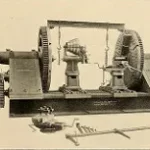
To me it means very little, as it rarely occurs. Products fail for a wide range of reasons and each failure follows it’s own path to failure.
As you may understand, some failures tend to occur early, some later. Some we call early life failures, out-of-box failures, etc. Some we deem end-of-life or wear-out failures. There are a few that are truly random in nature, just as a drop or accident causing an overstress fracture, for example. [Read more…]













